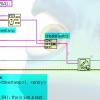Distributing an application built with plugin architechture
-
Similar Content
-
Malleable VIs - Nested Malleables - Broken Class adaptation in Malleable VIs in 2019
By Ryan Vallieu,
- 3 replies
- 9,320 views
-
- 2 replies
- 4,014 views
-
exec System Exec - not possible to recognize program or batch file
By Dawid,
- executable
- labview
- (and 1 more)
- 11 replies
- 16,379 views
-
- 4 replies
- 9,496 views
-
- 8 replies
- 5,095 views
-





Recommended Posts
Join the conversation
You can post now and register later. If you have an account, sign in now to post with your account.